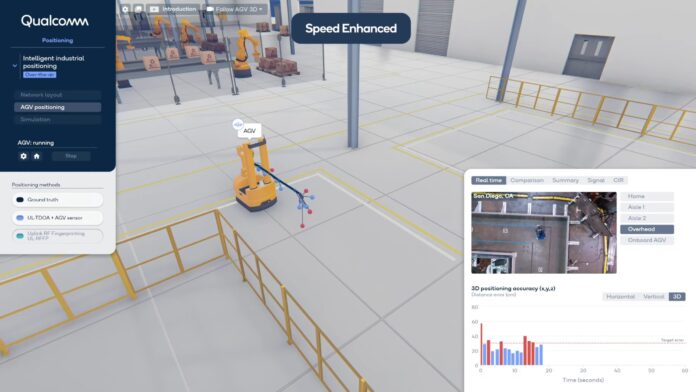During the Qualcomm 5G Summit, the company presented the evolution of 5G Positioning which combines the use of 5G signals and Artificial Intelligence to obtain the positioning of a device with an accuracy of 30 centimeters.
Indoor positioning has been in the works for more than a decade, but it hasn’t quite taken off.
There are several reasons for this. Most indoor positioning systems require dedicated infrastructure and use wireless protocols that were not standard.
Qualcomm’s approach to 5G positioning is two-fold. First, 5G positioning uses wireless communications infrastructure. It’s already there, and it’s not just installed for location services.
It works by having your phone (or some other 5G device) send a very simple 5G signal to nearby 5G access points with a timestamp. The amount of data transmitted is negligible and it uses practically no bandwidth.
Each access point receives the signal at a slightly different time and from there it is possible to triangulate the position of the emitter. It is the same principle as the GPS system, but indoors.
However, it is not enough. Unfortunately, the real world is full of situations where walls, corners, trees, etc. they can obfuscate the signal. All of these things can make the accuracy up to 8 meters, which is too inaccurate for many use cases.
That’s where AI comes to the rescue. Qualcomm engineers have shown that it is possible to train a neural network to correct for environmental interference with the 5G signal.
The training consists of placing QR codes that precisely mark 100% exact positions and using this “field truth” to train the AI. Engineers then use the approximate 5G positioning as inputs to the neural network and compare it to data from the truth of the field to feed back the wrong results until the AI can not improve the 5G positioning accuracy.
And works. There are cases where the positioning accuracy went to 30 centimeters, which is a remarkable result.
This accuracy is more than sufficient for consumer-grade indoor positioning, but is also usable for industrial robotics. As more and more companies want to deploy private 5G networks in their facilities, this is a great “extra feature” that comes with a 5G infrastructure.
Although this is a very compelling proof of concept, we don’t know when we might use this feature in our daily lives. The good news is that our 5G phones already have the necessary hardware. As 5G deployments become denser, the opportunity for indoor location services will increase.













